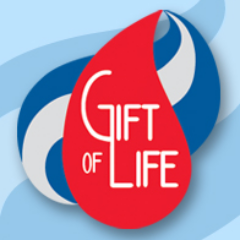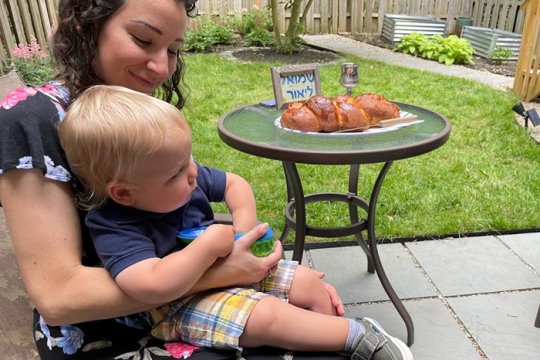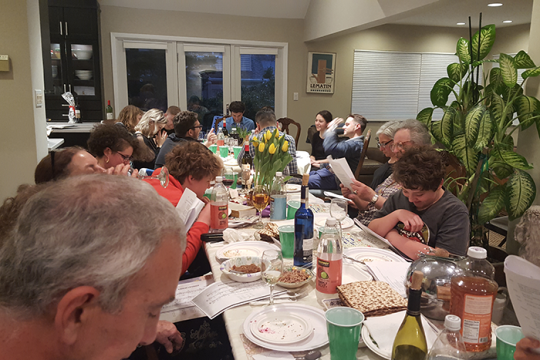
During my senior year of college, I was presented with an inspiring opportunity to fulfill an oft-spoken-of mitzvah that we rarely have firsthand experience with: pikuach nefesh, saving a life. I was contacted by the Gift of Life Bone Marrow Registry and told I was a potential match for someone in need of a bone marrow transplant. After some additional tests and the use of an impressive needle, my bone marrow was used to save the life of a 9-year-old girl with leukemia.
The registration process is simple: no needles, no blood, just a cheek swab. From there, no commitment is required. If you are matched with a potential recipient, you will go through other confirmatory tests before being cleared to donate. Before getting into the details, let me provide a little background information. Being a match for someone is rooted in your genetic makeup. For that reason, matches are most often found in people with shared ancestral heritage.
Gift of Life was born of an effort by founder Jay Feinberg to find a match after he was diagnosed with leukemia. The result was a massive project to bring European Jews into the registry. Since then, Gift of Life has entered more than 200,000 people into the registry. Though Gift of Life focuses its efforts in the Jewish community, it is an affiliate of the National Marrow Donor Program, so registering with Gift of Life also submits you into the larger national registry. There are a few ways to get involved:
- Find a donor drive in your area, or organize a registration drive for your synagogue, federation, Hillel, or Tupperware party.
- If you are interested in entering the registry on your own, Gift of Life will send you the registration materials after a tax-deductible donation of $54.
- As always, contributions can be made to help support the organization’s various activities.
The prospect of donating bone marrow can be nerve-wracking, but, speaking as someone who, A) has given, B) has a low tolerance for pain, and C) is terrified of needles, I can confirm that you need not worry. All that’s needed to find a match is a little DNA. When you attend a donor registration drive, you’ll fill out a quick form and swab the inside of your cheek with a glorified Q-Tip. As easy as that, you’re in the registry.
If you’re a potential match, Gift of Life will call you to discuss the process, the tests you will take, and any questions you have. In the first round, they contact a large number of potential matches in the hopes of finding as close to a perfect match as possible. If, after a blood test, you are deemed that near-perfect match and choose to proceed, you’ll undergo a physical, an EKG, X-rays, and more blood tests. Before receiving the donation, the recipient undergoes aggressive chemotherapy, completely wiping his or her immune system so that your donated marrow can replace it. Clearly, timing is important – but Gift of Life was even able to work with my final exam schedule to arrange for a procedure that worked for my schedule as well as the recipient’s.
There are two methods for donating, and the process used on you depends on what the recipient’s doctor deems the best way to receive and use the donation. The first, “peripheral blood stem cells,” works this way: Once a day for four days before you donate, you are injected with a growth factor that causes your body to create additional stem cells. On donation day, those stem cells are extracted by a machine that filters your blood and are given to the recipient to reboot their immune system. The other option, used in my case, is a straightforward bone marrow extraction. I went to the OR, where I was given general anesthesia before doctors put a needle into my lower back and took the marrow right out of my bones. I spent a few hours in recovery and was sent on my way with some strong painkillers. The question everyone asks is, “How badly did it hurt?!” Frankly, it wasn’t that bad. The day I donated, I flew home for winter break; I was sore for a few weeks, but there wasn’t a great deal of pain, and I switched to extra-strength Tylenol pretty quickly.
I urge you to consider the profound impact your actions could have on the life of another person – and to join the National Bone Marrow Registry. Being lucky enough to be selected as a donor was far and away the most meaningful and important thing I have ever done, and, God-willing, you will be fortunate enough to have that experience as well.
Jason Fenster is a first-year rabbinical student at Hebrew Union College-Jewish Institute of Religion and was a 2008-2009 Eisendrath Legislative Assistant at the Religious Action Center. This post is adapted from pieces that originally appeared on RACblog and She Who Has a Why.
Related Posts

Harnessing the Power of our Mothers Around the Seder Table

Melding Tradition and Innovation: Our Interfaith Toddler Naming Ceremony

